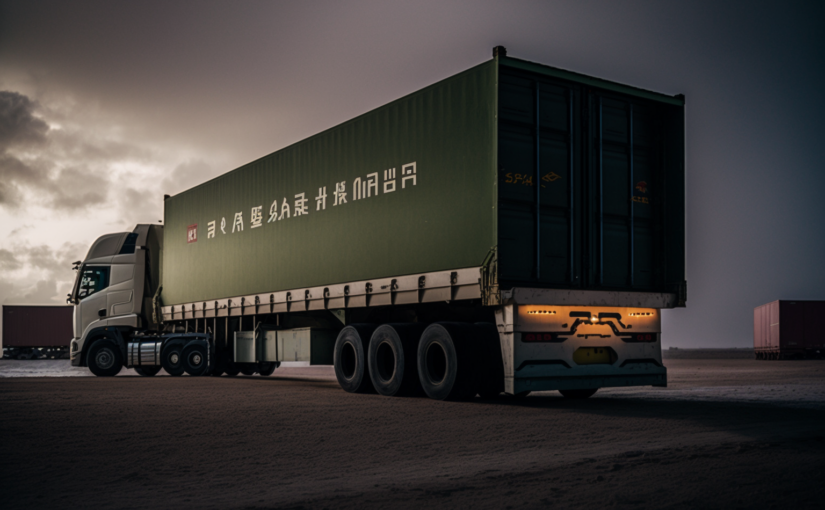The global trade between countries is increasing annually. With this, the efficiency of cargo transportation is becoming more important than ever. This article is intended to analyze the efficiency of cargo transportation from China to the US with trade facilitation. It will look at the current methods of transportation and different trade facilitation initiatives in place to ensure fast, efficient, and secure cargo transportation. In addition, potential methods of improving the speed and efficiency of cargo transportation from China to the US will be discussed.
Introduction to Trade Facilitation
Trade facilitation is a term used to describe strategies, policies and activities aimed at improving the efficiency and effectiveness of trade processes. This includes reducing the cost of trade and improving the speed at which goods can move between countries.
The concept of trade facilitation has four main elements:
- Improving the regulatory environment – This includes simplifying and streamlining administrative processes and procedures, such as developing standard forms and documentation, increasing the transparency of regulations, and providing guidance on how to comply with regulations.
- Improving the infrastructure for trade – This includes the physical infrastructure needed for the movement of goods and services, such as roads, ports, airports, and customs clearance systems. It also includes the development of electronic systems for tracking goods and services and communicating with customs authorities.
- Increasing access to information – This includes providing up-to-date information on regulations, procedures, and tariffs, as well as providing resources to help traders understand and comply with those regulations and procedures.
- Improving the quality of services – This includes improving the efficiency and effectiveness of services related to trade, such as banking and financial services, insurance, transport, and logistics.
Trade facilitation is a key element of international trade and is typically facilitated by international organizations, such as the World Trade Organization (WTO). These organizations provide a platform for countries to exchange information, develop standards, and negotiate agreements to facilitate the movement of goods and services.
Benefits of Trade Facilitation for Cargo Transportation
- Firstly, trade facilitation can reduce the cost of trade. This includes reducing the time and cost associated with customs clearance, reducing paperwork and administrative costs, and improving the efficiency of the transportation process. This can result in significant cost savings for businesses that are transporting goods.
- Secondly, trade facilitation can improve the speed at which goods can move between countries. This includes improving the infrastructure for trade, such as roads, ports, airports and customs clearance systems, and developing electronic systems for tracking goods and services and communicating with customs authorities. This can significantly reduce the time it takes for goods to move between countries.
- Thirdly, trade facilitation can reduce the risk associated with transporting goods. This includes providing up-to-date information on regulations, procedures, and tariffs, as well as providing resources to help traders understand and comply with those regulations and procedures. This can help to reduce the risk of delays or other problems with transporting goods.
- Finally, trade facilitation can improve market access for developing countries. This includes improving the quality of services, such as banking and financial services, insurance, transport, and logistics. This can enable developing countries to access markets that were previously inaccessible due to a lack of infrastructure or resources.
Hop over to this website you want to experience various trade facilitation procedures in the transportation of goods in practice.
Challenges in Cargo Transportation from China to the US
One of the main challenges in cargo transportation from China to the US is the length of the journey. The average distance from China to the US is about 8,000 miles, and cargo ships typically take between three to four weeks to complete the journey. This is a lengthy amount of time, and it can mean that products are not delivered to their destination on time, especially in cases where time-sensitive goods are being transported.
Another challenge in cargo transportation from China to the US is the language barrier. Even though English is the most widely spoken language in the world, the majority of Chinese people do not speak it. This can lead to communication problems and confusion when arranging shipments, which can lead to delays and other issues.
Finally, the cost of shipping goods from China to the US can be prohibitively high. Shipping costs are determined by a variety of factors, including the size and weight of the cargo, the distance it has to travel, and the type of freight carrier being used. The cost of shipping from China to the US can be several times higher than shipping within the US, and this can make it difficult for companies to keep their prices competitive.
One strategy that has been implemented to make cargo transportation from China to the US more efficient is the implementation of trade facilitation programs. According to the World Trade Organization (WTO), these programs provide financial incentives for shippers to use faster and more efficient shipping methods, such as electronic data processing, which can help reduce delays and improve the overall efficiency of the transportation process.
Strategies for Improving Efficiency of Cargo Transportation
One of the most important strategies is to use the best transportation methods for the cargo being shipped. Different types of cargo require different methods of transportation, and it is important to choose the one that is most suitable and cost-effective. For example, air transportation is typically the fastest way to move cargo but is also the most expensive. On the other hand, sea transportation is usually the most economical but may take more time to arrive.
Another strategy for improving the efficiency of cargo transportation is to take advantage of trade facilitation initiatives. These initiatives are designed to reduce the time and cost of international trade, and they include improved customs procedures, simplified document requirements, and access to trade finance. By taking advantage of these initiatives, the time and cost associated with cargo transportation can be reduced significantly.
Finally, utilizing new technologies can also help to improve the efficiency of cargo transportation. Technologies such as automation, blockchain, and artificial intelligence can be used to streamline processes and save time and money. Automation can be used for tasks such as sorting and packing cargo, while blockchain can be used to track cargo shipments and ensure the safety and security of goods.
By using the strategies outlined above, companies can improve the efficiency of cargo transportation and make their supply chains more efficient and cost-effective. Finally, we advise you to read our article, where we told you how to properly understand various delivery options to increase efficiency.
FAQ
Trade facilitation is a term used to describe strategies, policies and activities aimed at improving the efficiency and effectiveness of trade processes. This includes reducing the cost of trade and improving the speed at which goods can move between countries.
The four main elements of trade facilitation are improving the regulatory environment, improving the infrastructure for trade, increasing access to information, and improving the quality of services.
Strategies for improving the efficiency of cargo transportation include using the best transportation methods for the cargo being shipped, taking advantage of trade facilitation initiatives, and utilizing new technologies such as automation, blockchain, and artificial intelligence.

